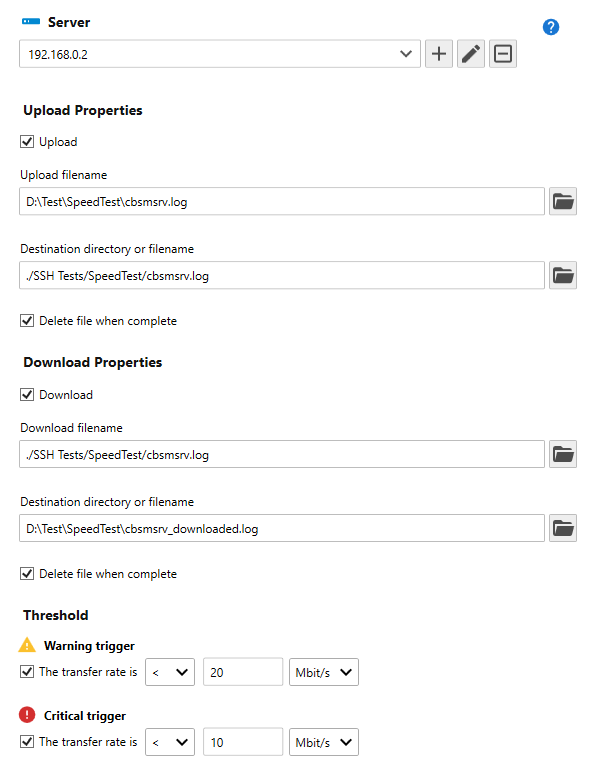Table of Contents
- Getting Started
- Agent-Based Monitoring
- Data Providers
- Directory Services
- Auditing
- Hosts
- Templates
- Template Properties
- Batch Update Templates
- Log Management Templates
- File and Directory Monitor Templates
- Windows Monitor Templates
- Account Lockout Monitor Template
- Logon Monitor Template
- CPU Monitor Template
- Memory Monitor Template
- Disk Space Monitor Template
- SMART Monitor Template
- Windows Update Template
- Process Monitor Template
- Service Monitor Template
- Performance Counter Monitor Template
- PowerShell Template
- Registry Value Monitor Template
- Active Directory User Monitor Template
- Active Directory User Integrity Monitor Template
- Task Scheduler Template
- Clock Synchronization Template
- Defragment NTFS Disks Template
- Network and Application Monitor Templates
- Database Monitor Template
- Directory Service Monitor Template
- DNS Blacklist Monitor Template
- DNS Monitor Template
- Domain Expiration Monitor Template
- Network Speed Monitor Template
- Ping Monitor Template
- Database Table Reseed
- SQL Server Shrink and Backup Template
- SSH Shell
- TCP Port Scan Monitor Template
- Website Monitor Template
- SSL Certificate Monitor Templates
- Email Monitor Templates
- SNMP Monitor Templates
- Monitors
- Reports
- Auto-Configurators
- Filters
- Actions
- Desktop Actions
- Email Actions
- Event Log Actions
- Executable Actions
- File Actions
- IIS IP Address Restriction Actions
- Microsoft Teams Actions
- PowerShell Actions
- Report Actions
- Service Actions
- SMS Actions
- SNMP Trap Actions
- Syslog Actions
- Template Actions
- IIS IP Address Restriction Actions
- Action Variables
- Schedules
- Environment Variables
- Options
- Account Lockout Monitoring and Reporting
- Merging Logs
- SNMP
- SSH Shell
- Syslog
- Exporting and Importing Configuration Objects
- Shared Views
- Auto-Config Host Assignment Properties
- General Executable Properties
- Assign Actions
- Assign Directories
- Assign Disks
- Assign Shares
- Assign Files
- Assign Consolidated Logs
- Assign Event Logs
- Assign Azure Audit Logs
- Target Files and Sub-Directories
- Define Log Entry Columns
- Define Log Entry Columns with Regular Expressions
- Define CSV and W3C Log Entry Columns
- Active Directory User and Group Filters
- Explicitly Assigned Logs
- File Explorer
- Report Columns
- Report Date/Time Ranges
- Report Security Event Log Filters
- Select Folder or File
- Executable Timeline
- Command Line Interface
- Troubleshooting
- Terminology
Corner Bowl Server Manager
SIEM, IPS, Server Monitoring, Uptime Monitoring and Compliance Software
Network Speed Monitor Template
The Network Speed Monitor enables you to monitor data transfer rates between two hosts using either Windows Shares, SFTP or FTP/S. This template is typically used to monitor SFTP and FTP/S server availability, verify network speed and monitor network performance.
How to configure the Network Speed Monitor Template:
- From the Menu Bar, select File | New. The Create New Object View displays.
- From the Create New Object View, expand Templates | Network and Application Monitors then select Network Speed Monitor. The New Template Properties View displays.
- The Template Properties view contains 3 tabs.
The Options Tab
-
Use the Server drop-down to select the remote host you want to monitor.

Once selected, the server is automatically assigned to this template. - Use the Upload check box to test upload speed.
- Use the Upload filename text box to select the local file to upload.
-
Use the Destination directory of filename to select the remote file destination and optionally the filename.

If no filename is specified, the local filename is saved to the specified path. - Use the Delete file when complete to configure Server Manager to delete the remote uploaded file once the monitor has completed.
- Use the Download check box to test download speed.
-
Use the Download filename text box to select the remote file to download.

If the file does not already exist, manually type the filename. -
Use the Destination directory of filename to select the local file destination and optionally the filename.

If no filename is specified, the remote filename is saved to the specified path. - Use the Delete file when complete to configure Server Manager to delete the locally downloaded file once the monitor has completed.
- Use the Warning trigger and Critical trigger controls to configure the trigger thresholds.
The following example uploads a local file to the remote SFTP server at 192.168.0.2, then downloads the uploaded file from the remote SFTP server to the local file system:
